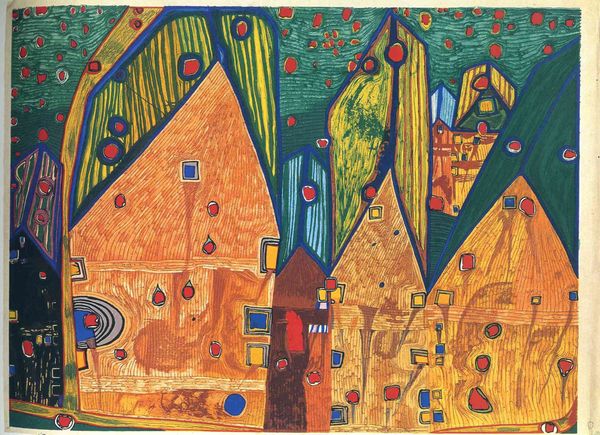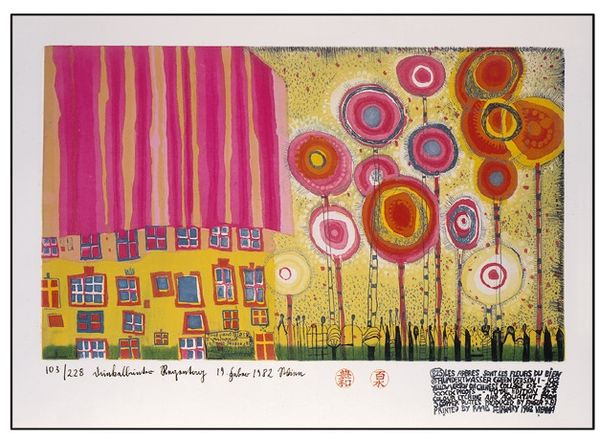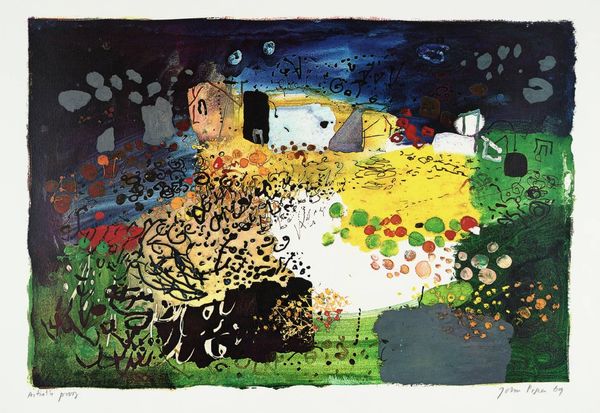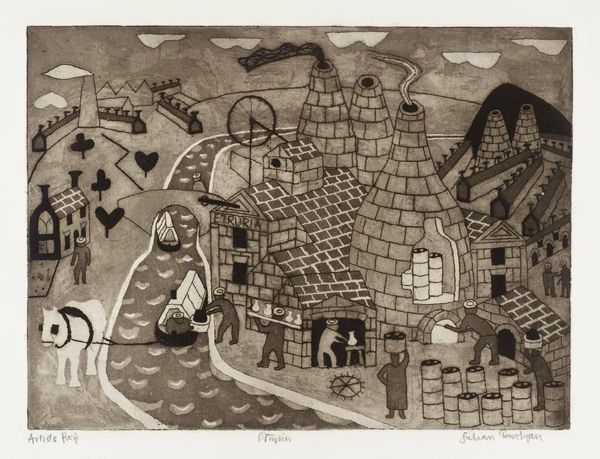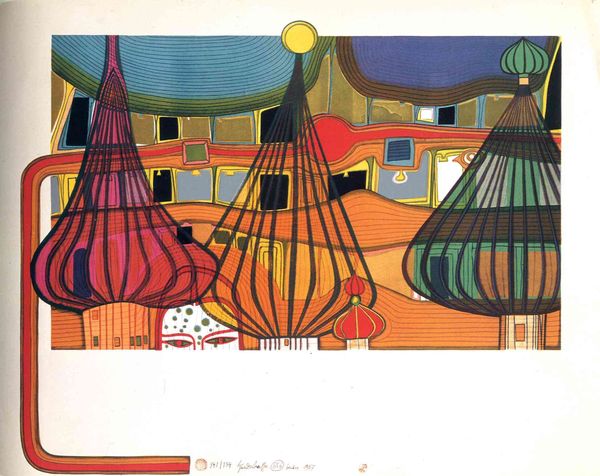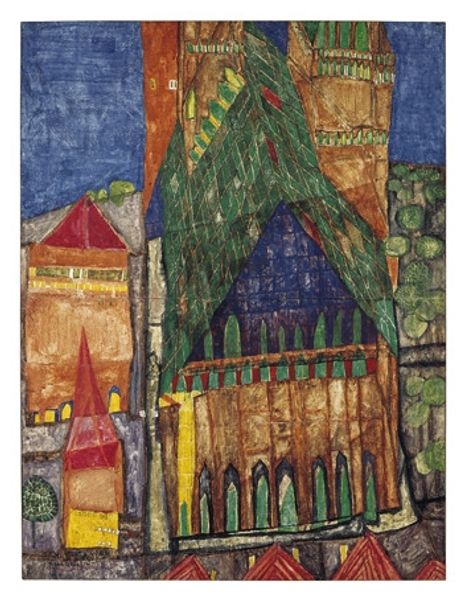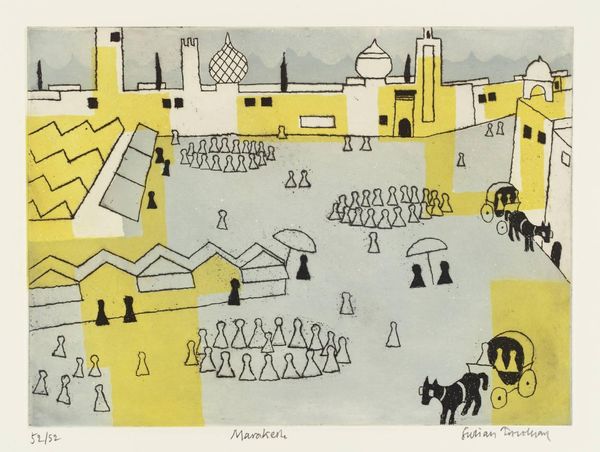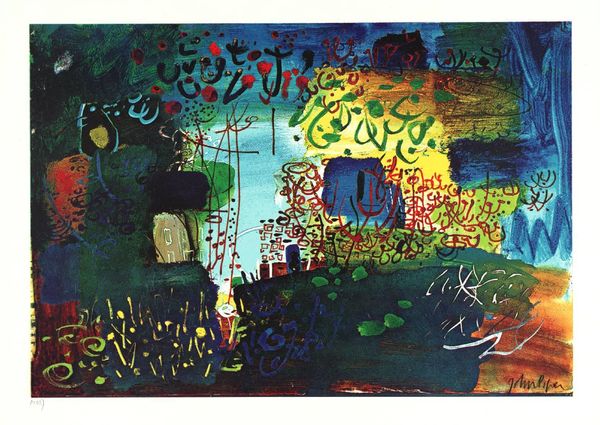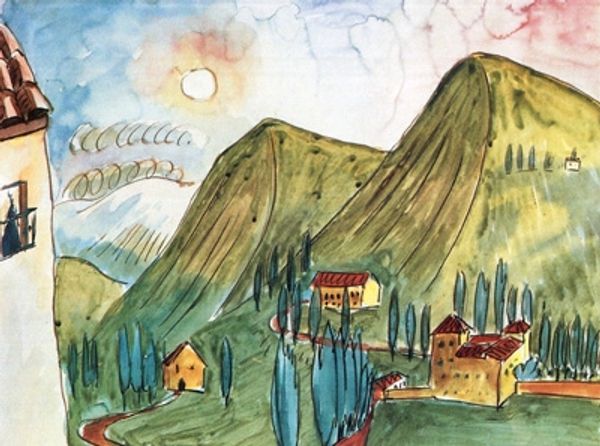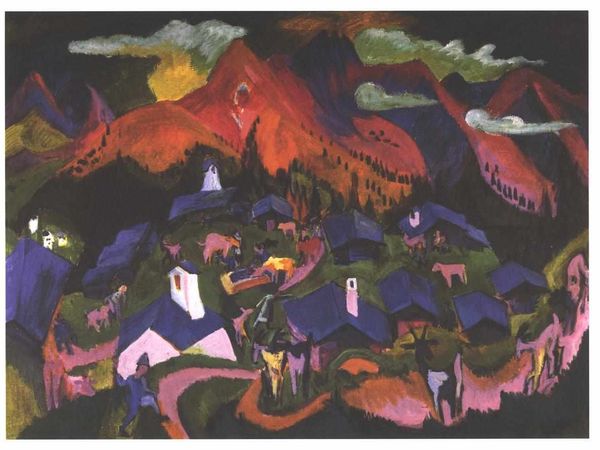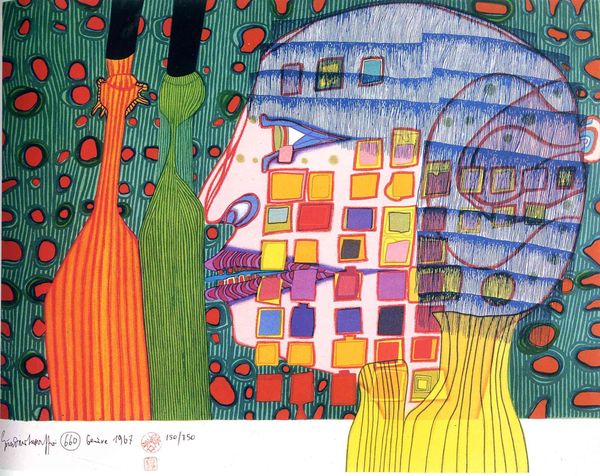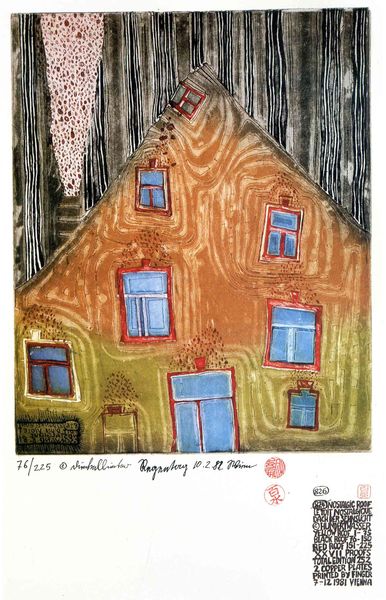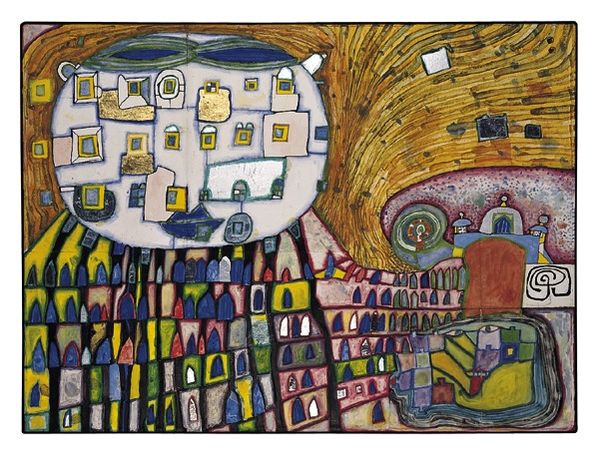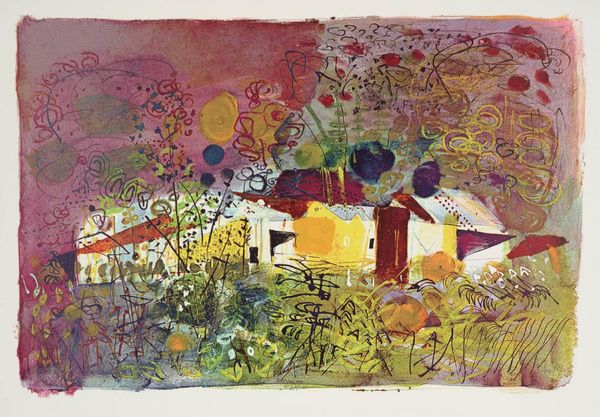
Copyright: NAMIDA AG, Glarus (displayed with the permission of Hundertwasser Non-Profit Foundation) The displayed work of art is protected under the copyright law. In particular, it is not permitted to reproduce, to alter, to print or to publish these works of art. Violations will be prosecuted according to civil and criminal law.
Curator: The watercolor before us, titled "762 Hide Under the Meadow It Begins to Rain," was created by Friedensreich Hundertwasser in 1976. It's a charming example of his distinctive style. Editor: It has an otherworldly feel. The houses, resembling bulbous mushrooms, clustered together beneath that slightly menacing, mottled sky…it feels whimsical, yet…off. Curator: The composition is fascinating, isn’t it? Hundertwasser eschews conventional perspective. Instead, we see an emphasis on the flattening of the picture plane, heightened by his unique interplay of shapes and colors. The whimsical forms give it a fairy-tale-like quality. Editor: A fairy tale, maybe, tinged with environmental anxiety. Consider the date: 1976. A time of growing awareness regarding climate change and the impacts of pollution, a reality hidden just beneath the surface of these “naive” landscapes. These aren’t just idyllic homes; they are vulnerable structures. Curator: Perhaps, but I think it is also essential to consider his application of color and texture. Notice the thin washes of watercolor to evoke atmospheric depth versus the more densely saturated colors of the buildings, the distinct visual patterns across the green meadow. This creates a lively surface dynamic. Editor: Certainly. I agree it is an important design component. Yet, the overall presentation appears almost suffocating. While visually enticing with all the circles, spirals, and irregular lines, there is very little visible space within the painting, evoking that claustrophobia often felt by marginalized groups. We are essentially observing a protected, albeit precarious, little neighborhood here. Curator: Ultimately, though, I read his landscapes, as they are an ode to the beauty and potential in imperfection. The slightly unbalanced elements underscore the importance of celebrating individuality over standardization in both art and in life. Editor: I concur. This small yet potent landscape resonates far beyond any single aesthetic theory, touching upon our contemporary world and compelling dialogue, as it calls for environmental justice.
Comments
No comments
Be the first to comment and join the conversation on the ultimate creative platform.
